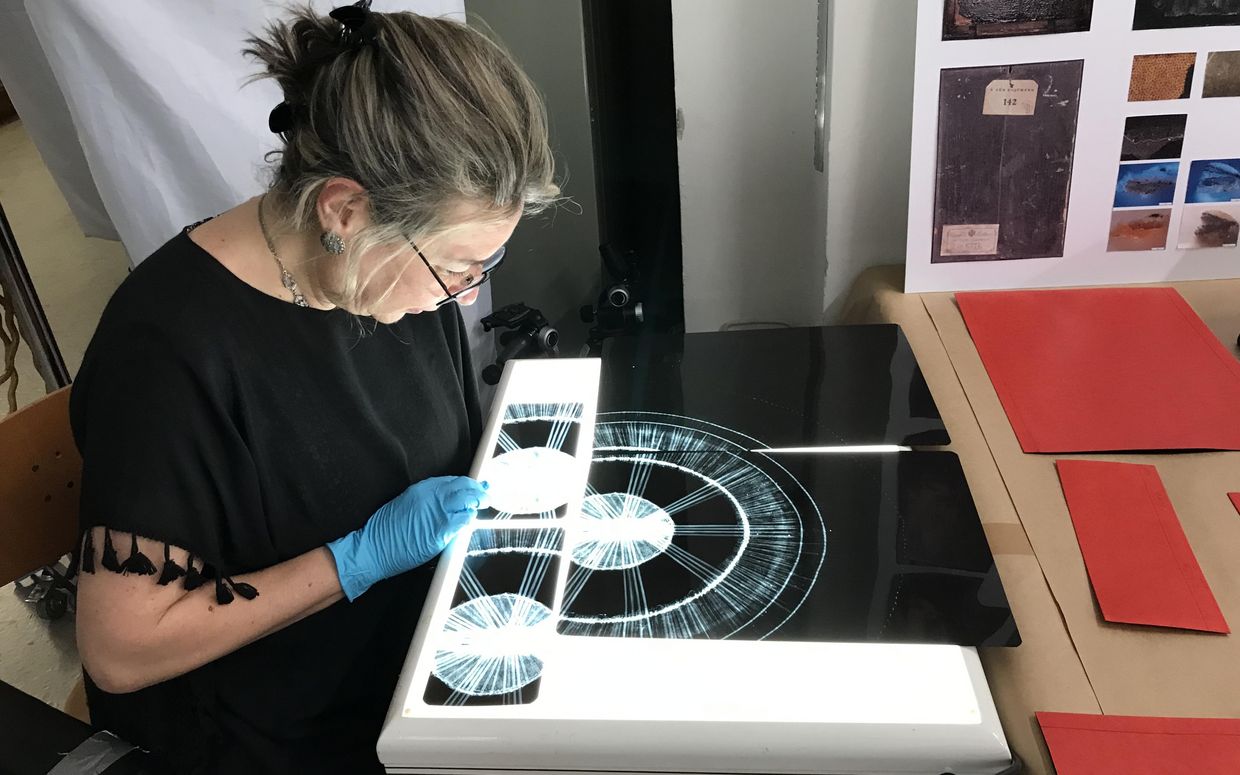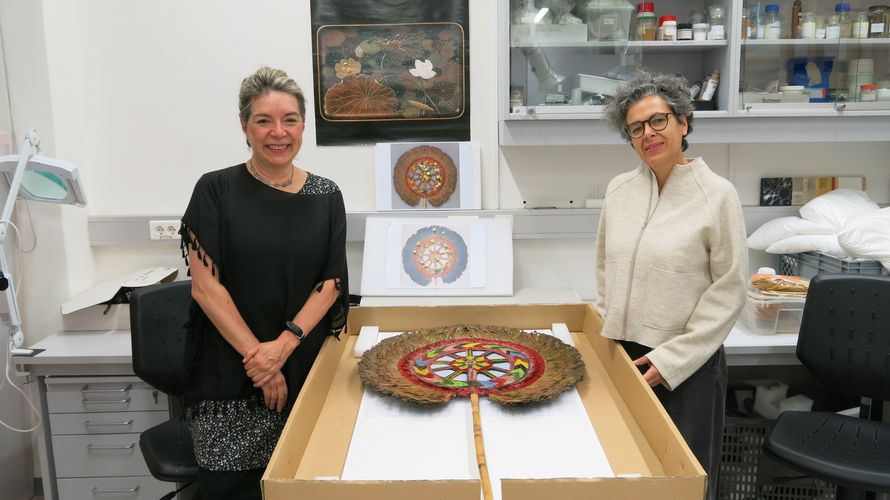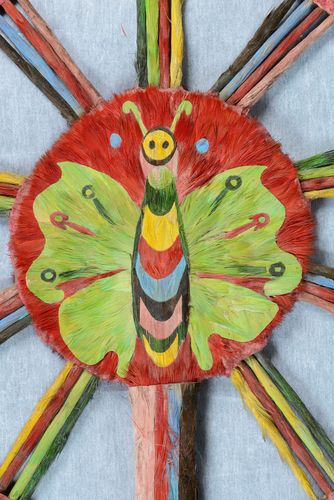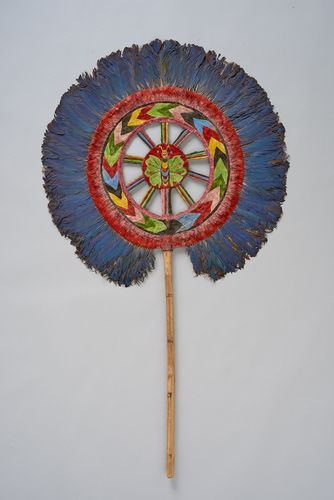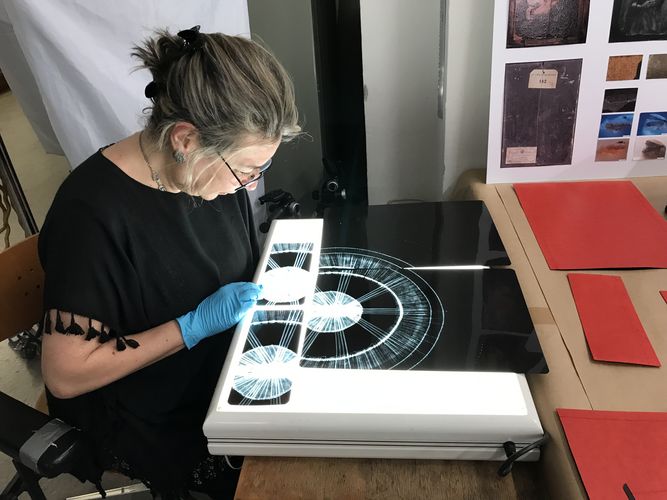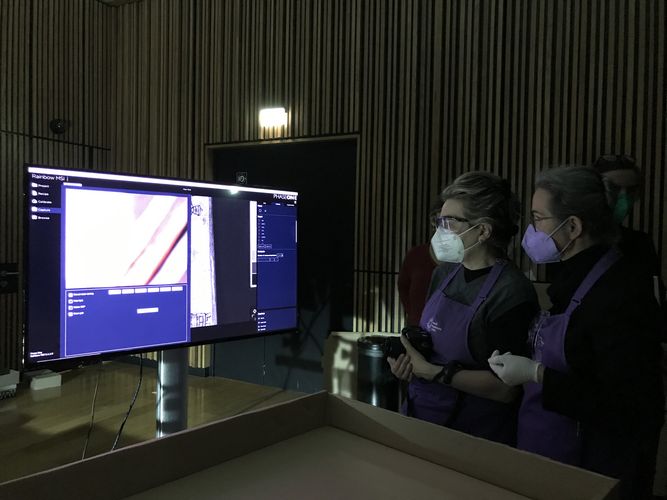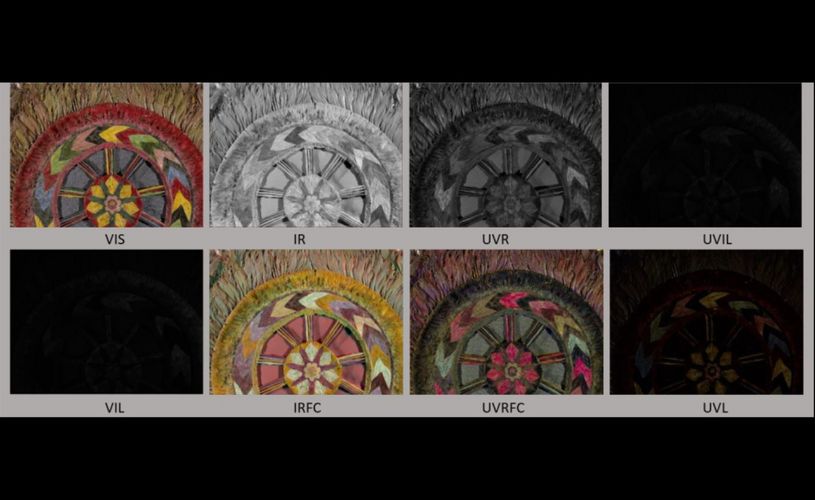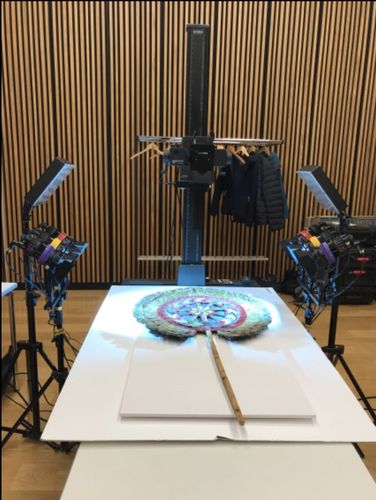About the project
In October of 2021, the Weltmuseum Wien in cooperation with the National Museum of Anthropology in Mexico City resumed its research on feather work from Mexico.
Both museums agreed on the importance of object-based research, which enables to connect cultures, places, times, and ideas. The object of study is a colonial feather insignia (coll. Ambras, 16th/early 17th century). Not the motif but the design of a butterfly and flower made scholars conclude that the object is of colonial origin.
The colonial period in “New Spain” started in the 1520s. Many aspects of native culture persisted under Spanish rule and creative exchange between Mesoamerican and non-Mesoamerican aesthetics and materials is documented through objects like the feather insignia. The study of materials, techniques, and related documents will provide information on its making and transformation but shall also uncover significant stories related to cross-cultural encounters. Finally, this research will serve as the basis for making a professional replica to be exhibited in Mexico City.
The most significant and signifying components of the feather insignia is the bird feathers. Birds and feathers have meaning beyond their decorative function. Therefor it was very important to us to verify and complete a 19th century feather identification and to identify dyed feathers as well as natural dyes and mordant.
Besides consultations with ornithologists we wanted to test the most advanced and non-destructive imaging techniques available to us. In October 2021 the Weltmuseum Wien had the opportunity to host a demo of the multispectral imaging equipment PhaseOne and a presentation by Dr. Annette T. Keller.
This non-destructive imaging equipment is a tailored solution suitable for a wide variety of multispectral imaging disciplines. It automates the capture of image stacks from a range of wavelengths – both visible and invisible to the human eye. The stacks are directly available to analyze substances and surfaces to determine readability, authenticity, age, and material characterization and distribution. - Phase One
Our first exciting results can be read in the Weltmuseum Wien Yearbook, Archive 71. Anyone interested in meeting the project team and learning more about Mexican feather conservation is invited to watch our interview published on the AMNH blog intheirtruecolors.
In 2024, the project entered its experimental phase. The conservation team, in collaboration with the science department and our new partner, dye expert and artist Carlos Barrera Reyes, experimented with natural dyes to match the color of the red feathers on the insignia. Our impressive results and dye recipes are published in the open-access Heritage Journal as part of the special issue Dyes in History and Archaeology 42.
Duration
October 2021 to December 2023
Project head
Gerard van Bussel
Florian Rainer
Team
María Olvido Moreno Guzmán
(Collaborates with the National Museum of Anthropology in Mexico City (MNA-INAH))
Renée Riedler
Conservator, Weltmuseum Wien

